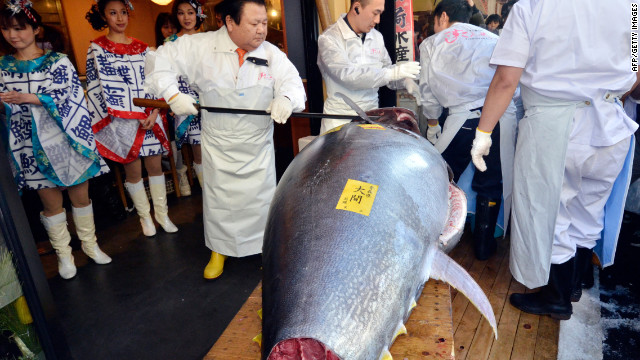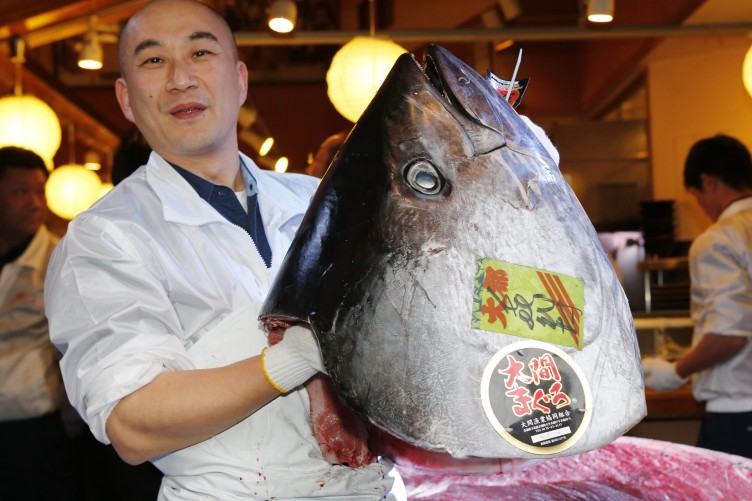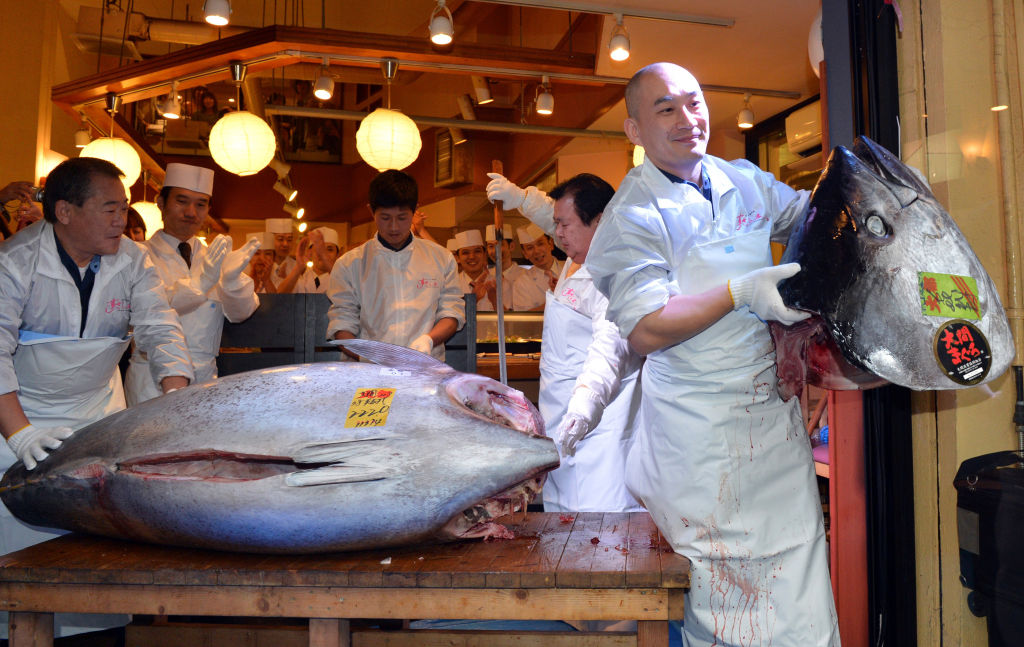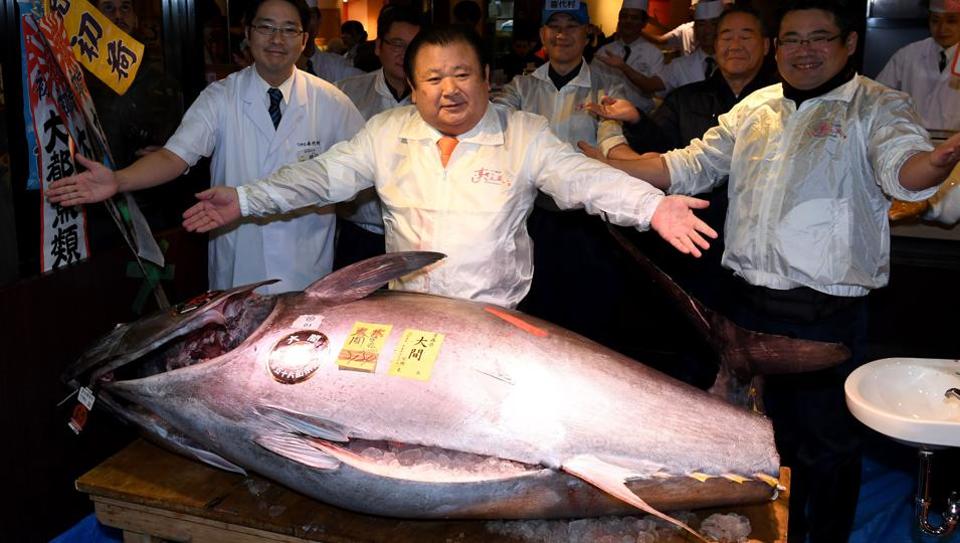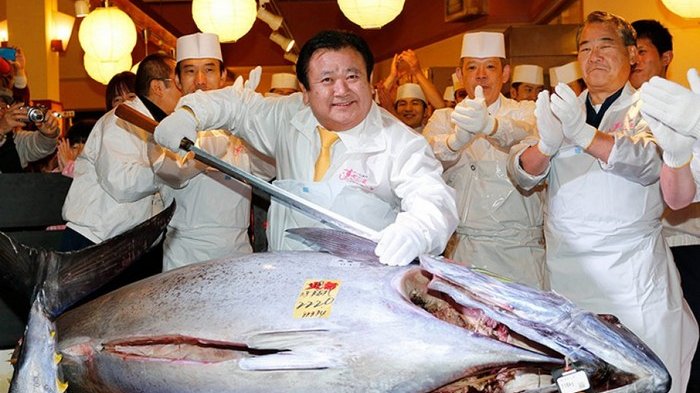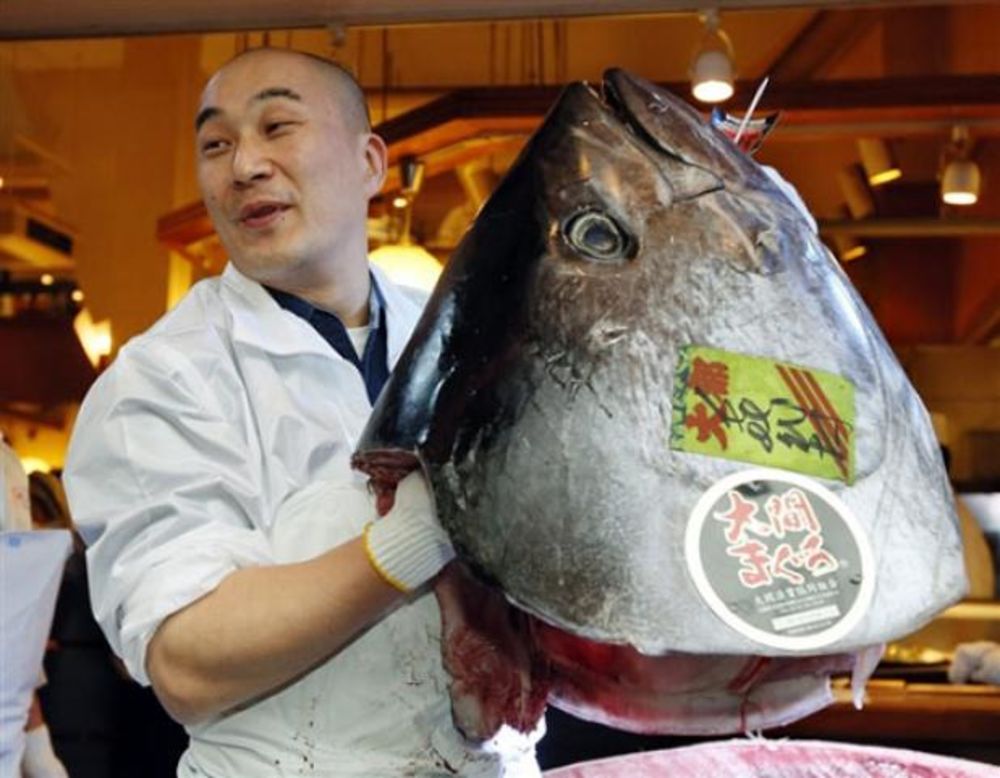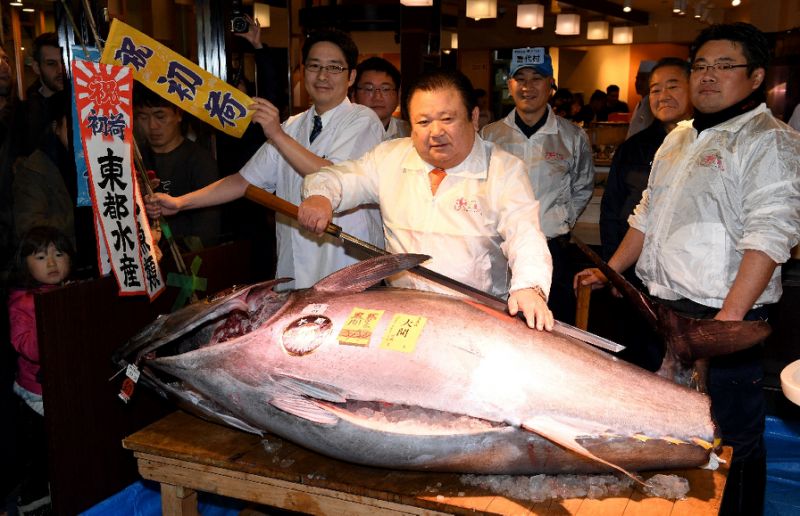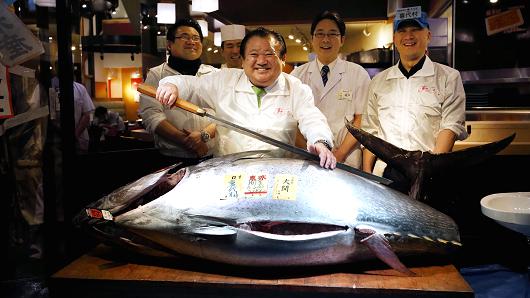Feature
World’s biggest Tsukiji market auctioned rare Tuna fish for Rs 20 crores!
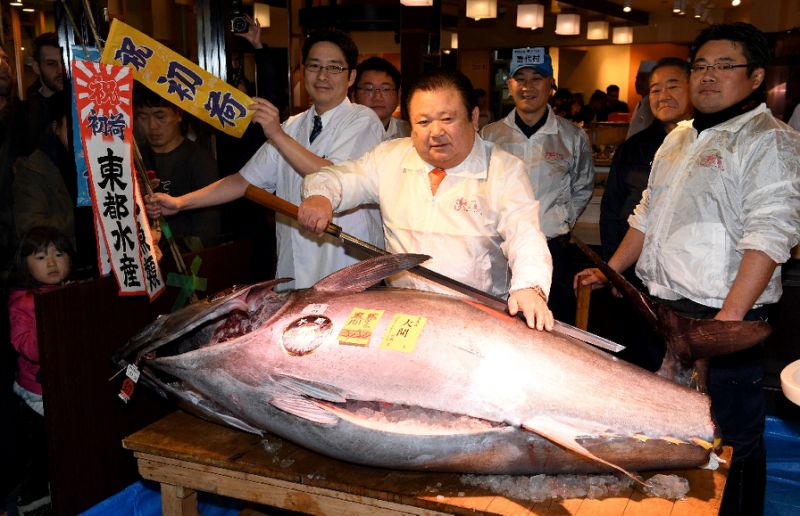
Tokyo: In first of its kind world’s famous Tsukiji market held its last pre-dawn New Year’s auction on Friday before closing down for relocation, with the highest bidder paying more than $320,000 (Rs. 2 crore) for a giant tuna fish.
After more than 80 years in operation, the world’s biggest fish market, a popular tourist attraction in an area packed with restaurants and shops, will move to Toyosu, a former gas plant a bit further east, on October 11th.
The market, which opened in 1935, is best known for its pre-dawn daily auctions of tuna, caught from all corners of the ocean, for use by everyone from top Michelin-star sushi chefs to ordinary grocery stores.
Before dawn, buyers in rubber boots inspected the quality of the giant fresh and frozen tunas by examining the neatly cut tail end with flashlights and rubbing slices between their fingers.
At 5:30 am, auctioneers rang handbells to signal the start of the auction and buyers began a flurry of bidding with hand signals for their preferred tunas.
“We have to continue the Tsukiji brand and establish a new brand” at the new site, Shigeo Yokota, the representative of buyers at Tsukiji, said in his New Year speech.
“I’m proud to be standing here at this historic moment,” he added.
The highest bidder paid ¥36.5 million for a bluefin tuna-a threatened species-weighing more than 400 kilogrammes caught off northern Aomori prefecture, according to the market.
Rare Tuna fish auctioned for Rs 20 crores in world’s biggest Tsukiji market!:
“It’s the best feeling,” said Akifumi Sakagami, head chef at a sushi restaurant in the Ginza shopping district which paid for the tuna, after the giant fish was sliced into several pieces for delivery.
“We wanted to get the number-one tuna at the first auction of the year at Tsukiji… because this is the last New Year auction,” he said, adding that the restaurant owner had a budget of ¥100 million yen.
“Tsukiji is the world’s number-one fish market. It’s in a very convenient location. It’s sad that it will be closed down,” Mr. Sakagami said.
Kiyoshi Kimura, known as Japan’s self-styled “Tuna King” who in 2013 paid a record $1.8 million for a bluefin, snapped up a 190-kilogramme fish at Friday’s auction for around ¥30 million, the highest price per kilogramme.
Mr. Kimura has built his successful Sushizanmai chain into a national brand by paying big money at Tsukiji’s first auction every year.
At the first auction of 2017, he paid more than $600,000 for a 212-kilo bluefin tuna.
The Tsukiji market handles 480 kinds of seafood worth $14 million daily-as well as 270 types of fruits and vegetables-and has fed Japan’s hunger for fresh seafood since its opening.
But in recent years the antiquated facility has prompted its users, such as seafood wholesalers, to voice concerns about its earthquake resistance, sanitation and fire safety, as well as the structure’s use of asbestos and its crumbling walls.
They have also called for upgraded technology, such as better refrigeration systems.
Entertainment
Meghalaya Reserves Legalized Gambling and Sports Betting for Tourists

The State Scores Extra High on Gaming-Friendly Industry Index
Meghalaya scored 92.85 out of 100 possible points in a Gaming Industry Index and proved to be India’s most gaming-friendly state following its recent profound legislation changes over the field allowing land-based and online gaming, including games of chance, under a licensing regime.
The index by the UK India Business Council (UKIBC) uses a scale of 0 to 100 to measure the level of legalisation on gambling and betting achieved by a state based on the scores over a set of seven different games – lottery, horse racing, betting on sports, poker, rummy, casino and fantasy sports
Starting from February last year, Meghalaya became the third state in India’s northeast to legalise gambling and betting after Sikkim and Nagaland. After consultations with the UKIBC, the state proceeded with the adoption of the Meghalaya Regulation of Gaming Act, 2021 and the nullification of the Meghalaya Prevention of Gambling Act, 1970. Subsequently in December, the Meghalaya Regulation of Gaming Rules, 2021 were notified and came into force.
All for the Tourists
The move to legalise and license various forms of offline and online betting and gambling in Meghalaya is aimed at boosting tourism and creating jobs, and altogether raising taxation revenues for the northeastern state. At the same time, the opportunities to bet and gamble legally will be reserved only for tourists and visitors.
“We came out with a Gaming Act and subsequently framed the Regulation of Gaming Rules, 2021. The government will accordingly issue licenses to operate games of skill and chance, both online and offline,” said James P. K. Sangma, Meghalaya State Law and Taxation Minister speaking in the capital city of Shillong. “But the legalized gambling and gaming will only be for tourists and not residents of Meghalaya,” he continued.
To be allowed to play, tourists and people visiting the state for work or business purposes will have to prove their non-resident status by presenting appropriate documents, in a process similar to a bank KYC (Know Your Customer) procedure.
Meghalaya Reaches Out to a Vast Market
With 140 millions of people in India estimated to bet regularly on sports, and a total of 370 million desi bettors around prominent sporting events, as per data from one of the latest reports by Esse N Videri, Meghalaya is set to reach out and take a piece of a vast market.
Estimates on the financial value of India’s sports betting market, combined across all types of offline channels and online sports and cricket predictions and betting platforms, speak about amounts between $130 and $150 billion (roughly between ₹9.7 and ₹11.5 lakh crore).
Andhra Pradesh, Telangana and Delhi are shown to deliver the highest number of bettors and Meghalaya can count on substantial tourists flow from their betting circles. The sports betting communities of Karnataka, Maharashtra, Uttar Pradesh and Haryana are also not to be underestimated.
Among the sports, cricket is most popular, registering 68 percent of the total bet count analyzed by Esse N Videri. Football takes second position with 11 percent of the bets, followed by betting on FIFA at 7 percent and on eCricket at 5 percent. The last position in the Top 5 of popular sports for betting in India is taken by tennis with 3 percent of the bet count.
Local Citizens will Still have Their Teer Betting
Meghalaya residents will still be permitted to participate in teer betting over arrow-shooting results. Teer is a traditional method of gambling, somewhat similar to a lottery draw, and held under the rules of the Meghalaya Regulation of the Game of Arrow Shooting and the Sale of Teer Tickets Act, 2018.
Teer includes bettors wagering on the number of arrows that reach the target which is placed about 50 meters away from a team of 20 archers positioned in a semicircle.
The archers shoot volleys of arrows at the target for ten minutes, and players place their bets choosing a number between 0 and 99 trying to guess the last two digits of the number of arrows that successfully pierce the target.
If, for example, the number of hits is 256, anyone who has bet on 56 wins an amount eight times bigger than their wager.

